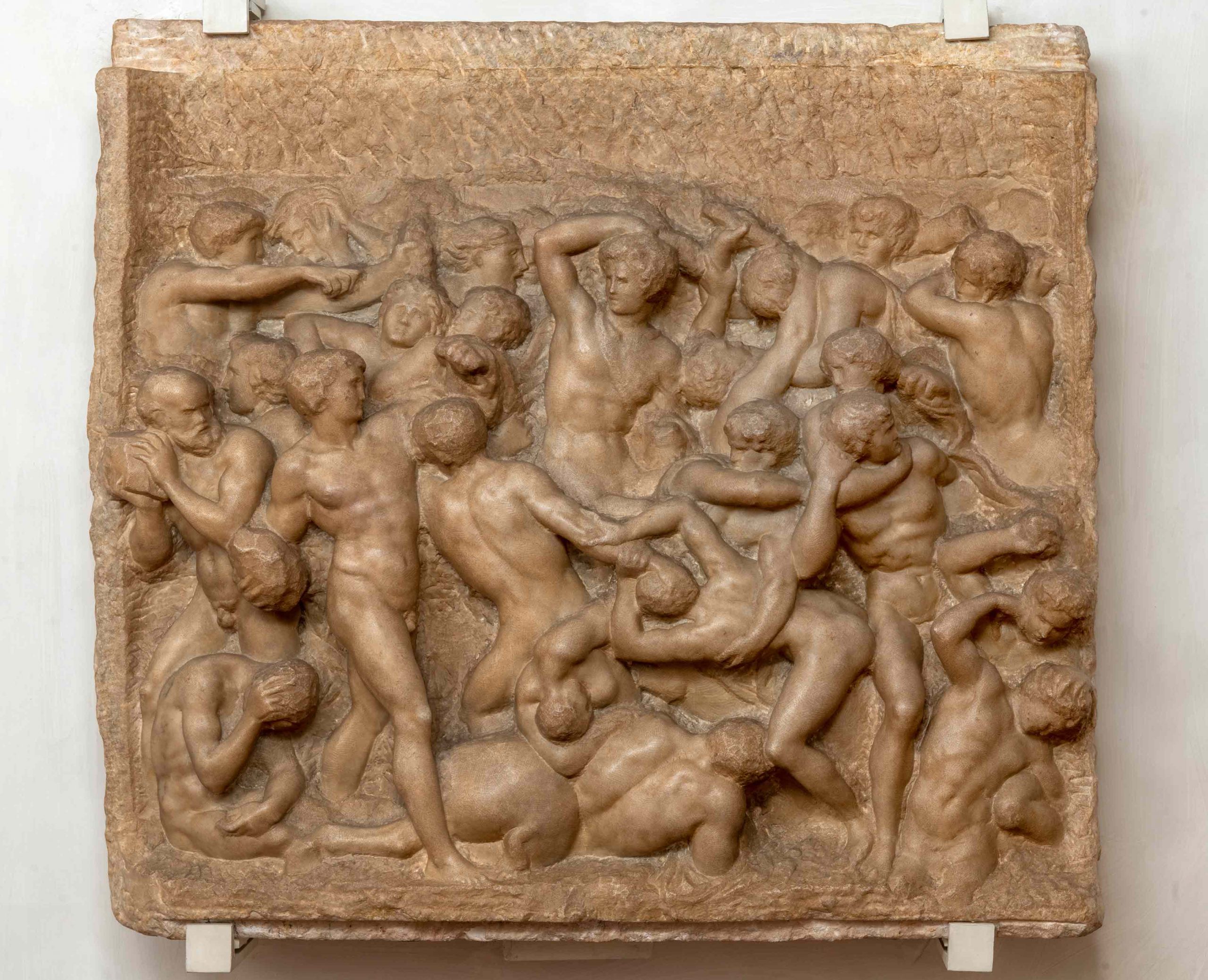
Michelangelo Buonarroti
Battle of the Centaurs
1490-1492
marble, 80,5 x 88 cm
Casa Buonarroti, inv. 194
The earliest mention of the Battle of the Centaurs is to be found in a letter written in 1527 by the agent of the Gonzaga family in Florence, Giovanni Borromeo, to Federico, marquis of Mantua, who wanted to get hold of a work by Michelangelo at any price. The letter refers to a “certain picture of nude figures, in combat, made of marble, which he had begun at the request of a great lord, but is not finished. It is one and a half ells on each side, and so to see it is a beautiful thing, and there are more than twenty-five heads and twenty different bodies, and they adopt various attitudes.” The “great lord” was Lorenzo the Magnificent.
As far as printed sources are concerned, the work was recorded for the first time in Ascanio Condivi’s Vita di Michelagnolo Buonarroti, published in Rome in 1553, where we find a testimony to the appreciation of the now elderly Michelangelo for the great work of his youth: “… I recall hearing him say that, whenever he sees it again, he realizes how much wrong he has done nature in not following the art of sculpture, when, judging by that work, he could have done so much.” It has rightly been observed that the position of Christ the Judge, the fulcrum for the whole action of the Last Judgment in the Sistine Chapel, is reminiscent of the central figure in the Battle: yet another sign that the memory of the masterpiece of his youth was still vivid for the artist. While Condivi’s biography states that the work was executed for Lorenzo the Magnificent, on a theme suggest- ed by Politian, in the 1568 edition of the Lives Giorgio Vasari includes the Battle in his description of the Garden of San Marco, the piece of land owned by Lorenzo the Magnificent and facing onto Piazza San Marco in Florence, which was a celebrated training ground for a number of young artists, including the adolescent Michelangelo. The work has always been in the Florentine house of the Buonarroti family, which it has never left right down to the present day. When Michelangelo the Younger started to set up the Gallery on the second floor of the palace, he had “a slice of marble” cut off from the back of the relief in order to place it on one of the shorter walls of this room (1614). The subject, described by Condivi as “the abduction of Deianeira and the scuffle of Centaurs” and by Vasari as “the battle of Hercules with the Centaurs,” has provoked a great deal of debate and the matter is still not completely settled: in fact the young Michelangelo, while drawing on a theme that had already been used in the Florentine figurative culture of the last two decades of the fifteenth century, appears to have been more interested in conveying an impression of strength and action than in illustrating a particular episode from mythology. The relief is, as the agent of the Gonzagas wrote, “begun” but “not finished.” The figures in the foreground are still attached to the background by pieces of marble that should have been re- moved. All the figures still show the marks of the scalpel. As for the upper strip of the relief we can only conjecture what Michelangelo in- tended to represent there. In all likelihood the Battle was left incomplete by Michelangelo be- cause of the death of Lorenzo the Magnificent, in the spring of 1492.
Thanks to the generous support of the Friends of Florence Foundation, it has been possible to carry out the restoration of the Battle of the centaurs, conducted by Marina Vincenti (2021-2022).
